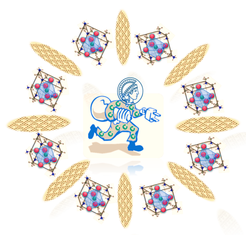Carbon Nitride Improves Perovskite Solar Cells
Researchers at the Max Planck Institute of Colloids and Interfaces, in collaboration with the Brabec Group at the Helmholtz-Institute Erlangen-Nürnberg for Renewable Energy, show that delaminated carbon nitride can significantly improve the energy yield of perovskite solar cells.

Photovoltaics are nowadays the cornerstone of decentral, renewable, and scalable energy production. The standard solution is based on silicon. In the last decade hybrid organic-inorganic perovskite halide based systems have turned into a candidate enabling more simpler and thereby potentially cheaper device construction, but also higher energy yields. However, there are still some weaknesses to resolve, for instance lifetime issues and interface photocorrosion.
Daniel Cruz et al. now employed a new type of 2-dimensional polymer, carbon nitride, as a buffer layer in such perovskite cells and found significant improvements of the photovoltaic performance while being solution processable, i.e. compatible to simple printing and coating processes. The new material improves the electron extraction from the photoactive perovskite and acts as an active barrier to separate the electron and hole conducting sides of the photovoltaic cells. The described improvement by about 2 % absolute energy yield seems to be small, but can contribute significantly to the future economy of such solar cells.
Daniel Cruz underlines: “Finally, our work proposes a novel method to efficiently suppress non-radiative recombination of charges using the unexplored properties of carbon nitride in the solar cell field. Additionally, it gives a more general methodology for interfacial modification, due to the simplicity of this post-treatment approach, and therefore potentially applicable to other solar cells, thus, opening doors for a new class of materials to be implemented.”
As summary, the researchers demonstrate a general tool to improve the perovskite solar cell energy conversion efficiency, utilizing a modified carbon nitride dispersion as a cheap, reproducible, metal-free, sustainable and potentially scalable solution to improve electronic materials interfaces by acting as a buffer layer.












